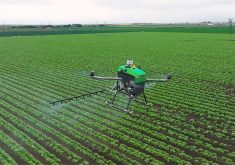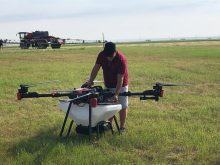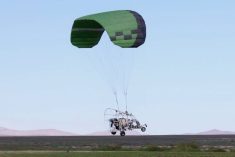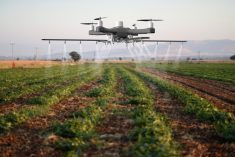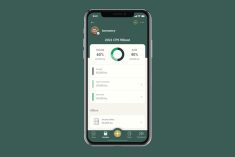Farmers Edge says it’s making satellite imagery a practical and affordable agronomic tool for farmers through a new strategic partnership with Planet, the company with the largest fleet of Earth-imaging satellites.
“We think this will be game-changing,” Farmers Edge president and CEO Wade Barnes said in an interview Oct. 3.
“I think it’s going to make a huge change to how farmers manage their crops.”
The multi-year, multi-million dollar deal announced Wednesday makes Farmers Edge, the Manitoba-based, international precision agriculture company, the sole distributor in key agricultural regions, including Canada and the U.S., for Planet, an integrated aerospace and data platform company. (See sidebar below for the full list of countries.)
Read Also
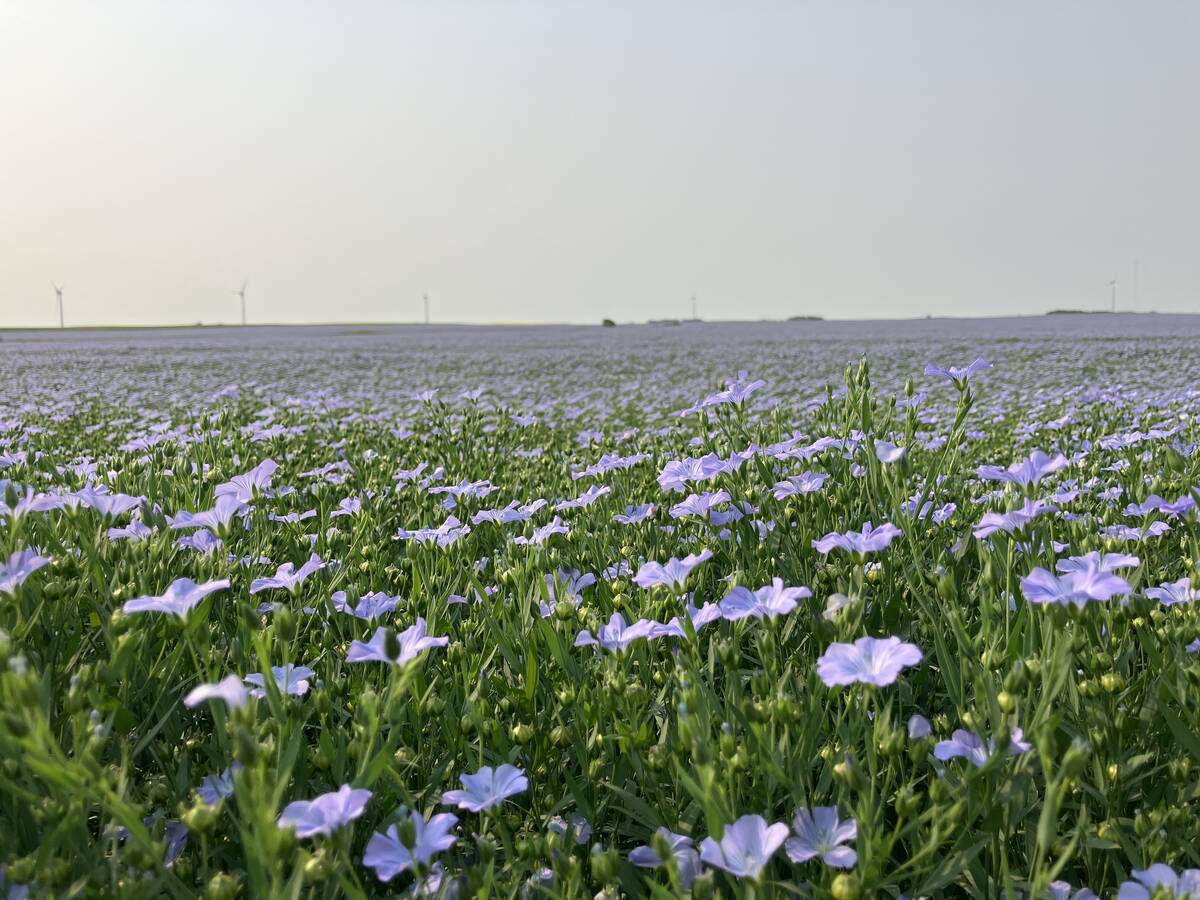
‘A little bit of a resurgence for flax’
Flax is sitting in a good position following this year’s harvest, said Scott Shiels of Grain Millers Canada in Yorkton, Sask.
Farmers Edge will have the right to use and distribute high-resolution, high-frequency imagery from Planet’s three satellite constellations — RapidEye (eight-metre resolution), Planet “Doves,” (3.7-metre) and SkySat (one-metre), which was recently acquired from Google — as well as future sensors developed by Planet.
The highest-resolution option makes plant counts possible, but in most cases resolution is less important than how often images are available, Barnes said.
Satellite companies have promised field images weekly, but in fact only delivered two or three a growing season — not frequently enough to alert farmers to problems in their crops, Barnes said. Farmers Edge will provide farmers with images every two or three days, and in some places, daily.
“This is going to be like a safety net for the grower,” he said. “This technology will save fields.”
The images will be integrated with Farmers Edge’s services making it easier for farmers and their agronomists to spot problems that could undermine yields, such as inadequate fertilizer, poor drainage, weeds, insects or diseases, Barnes said.
“We know the field-centric weather, we know the planting dates, we know the varieties,” he said. “We are already doing modelling. We’re saying there will be a disease outbreak in the field and then the imagery starts to monitor and you’ll be able to see an issue, say where there’s die-back, and then triangulate it together. What we’re hoping is we’ll be able to predict things and get guys to go out and act on it before you see a problem. The Planet Dove is going to be the eyes and ears of the field, so to speak, throughout the growing season.”
A lack of timely satellite images drove some farmers to drones, but the time and effort required makes it less attractive, Barnes said.
“I’d say in about two years people went from being very excited about drones, to not,” he said.
But drones are still useful, he added.
“Where I see drones having incredible value is with niche things like drainage, or having real problematic areas where you want to go out and physically see the field from the drone while you are flying it,” Barnes said. “Drones will have their place. I just think that people thought drones would replace imagery from satellites and that’s not really practical. My view is that you won’t see less drones. I think you’ll see a more targeted approach to it.”
Access to satellite NDVI (normalized difference vegetation index) images will cost farmers enrolled in Farmers Edge’s Smart and Smart VR programs just over $1 an acre more. Farmers with existing contracts will be allowed to opt out, but based on trial runs this summer, Barnes said he doubts many will.
“Our gut tells us based on what we’ve heard from farmers is that everyone is going to want this,” he said. “For just over a dollar an acre it’s just something that would be difficult to turn down.”
While large competing precision ag companies won’t have access to Planet’s images, local ag retailers, co-operatives, machinery dealers and agronomy consultants can partner with Farmers Edge to access the satellite images, Barnes said.
It reflects an evolution in Farmers Edge’s business model. It started off in Pilot Mound, Man. in 2005 as an agronomy consulting company, competing with other consultants. But when Farmers Edge expanded into the U.S. it partnered with consultants providing them with enhanced services, Barnes said. For the last year and a half, Farmers Edge has been moving in the same direction in Canada.
“Our view is Farmers Edge is much more technology based,” Barnes said. “We’re building the tools so that existing consultants that have relationships with farmers they’ll do a better job on those farms.
“Our view is that we want to be somewhat the Costco of ag tech where we provide a good product at a really good price. We think a lot of the retail agronomists, and paid for consultants, can use our product on those farms as a base and then be able to provide a more boutique service on top of that if required. Not all farmers want a boutique service. Some of them want more of a Costco-type service. We want to be the underlining engine that powers other people’s tools. Our view is this will enable a crop consultant or an agronomist to be able to manage more acres, more effectively.”
— Allan Dawson is a reporter for the Manitoba Co-operator at Miami, Man. Follow him at @AllanReporter on Twitter.
Where Farmers Edge has sole use of Planet’s satellite imagery
Farmers Edge has exclusive access to Planet’s satellite images in the following countries:
Argentina, Australia, Brazil, Canada, Chile, Commonwealth of Independent States (CIS) (including Russia, Ukraine, Kazakhstan, Armenia, Belarus, Kazakhstan, Kyrgyzstan, Moldova Tajikistan, Turkmenistan and Uzbekistan), South Africa, United States and Uruguay.
Farmers Edge by the numbers:
- Funds raised: $125 million
- Employees: 450
- Acres: 20 million expected by the end of the year.
- Global weather stations: More than 4,000.
- Connected farm equipment: More than 9,000.
About half of Farmers Edge’s acres are in Canada, followed by the U.S., Brazil, Russia and Australia.
“By this time next year we’re projecting Brazil will be No. 1, the U.S. will be No. 2, and Canada will be No. 3,” said company president and CEO Wade Barnes. — A.D.



